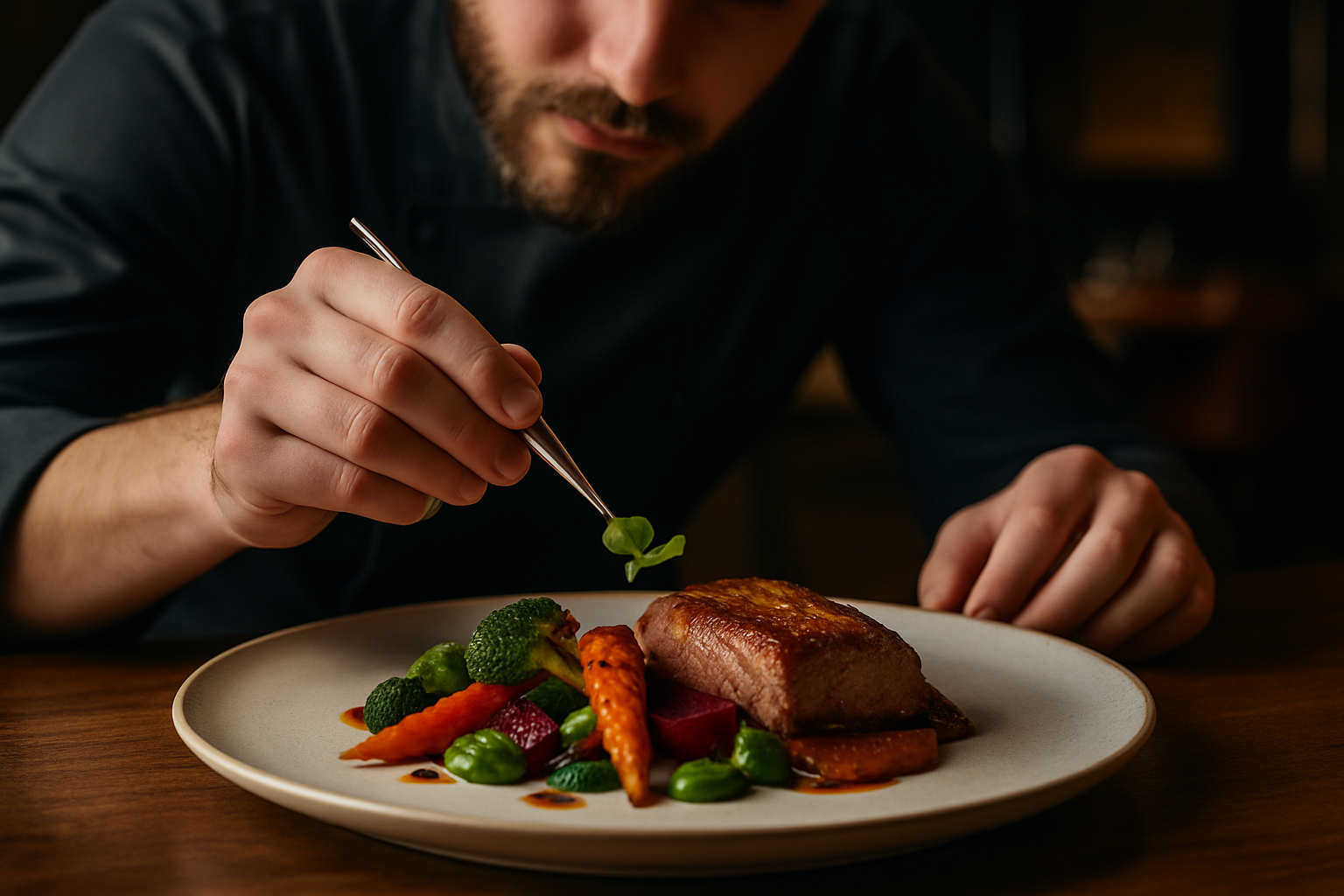Sizzling Secrets: The Art of Dry-Aged Beef
Elevate your culinary game with the tantalizing world of dry-aged beef. This time-honored technique transforms ordinary cuts into extraordinary delicacies, offering a depth of flavor that will leave your taste buds dancing. Join us as we explore the science, process, and pure indulgence of dry-aged beef, unlocking a realm of gastronomic possibilities that will revolutionize your approach to steak.

Mastering the Dry-Aging Process
Creating the perfect dry-aged steak requires precision and patience. The process begins with selecting high-quality beef, typically prime cuts with good marbling. The meat is then hung in a temperature-controlled room, usually between 34-38°F (1-3°C), with humidity levels around 80-85%. Air circulation is crucial to prevent spoilage and promote even aging. As the weeks pass, a dark crust forms on the exterior, protecting the meat within. This crust is trimmed away before cooking, revealing the prized, aged beef beneath. The longer the aging process, the more pronounced the flavor becomes.
Flavor Profile: A Symphony for the Senses
Dry-aged beef offers a sensory experience like no other. The flavor is often described as nutty, earthy, and intensely beefy. Notes of blue cheese, mushroom, and even hints of popcorn can be detected in well-aged cuts. The texture becomes remarkably tender, almost buttery, as the enzymes break down tough connective tissues. This complexity of taste and texture is what sets dry-aged beef apart from its fresh counterparts, making it a true delicacy for those who appreciate the finer points of gastronomy.
Cooking Techniques for Dry-Aged Perfection
Preparing dry-aged beef requires a different approach than cooking fresh steak. The meat is already tender and flavorful, so less is often more. A simple seasoning of salt and pepper is usually sufficient to enhance the natural flavors. High-heat cooking methods like grilling or pan-searing work well, creating a delicious crust while preserving the meat’s tenderness. It’s crucial not to overcook dry-aged beef, as its reduced moisture content means it cooks faster than regular steak. Aim for medium-rare to fully appreciate the complex flavors developed during the aging process.
Pairing and Presentation: Elevating the Experience
To truly showcase the exquisite flavors of dry-aged beef, consider your pairings carefully. Bold, tannic red wines like Cabernet Sauvignon or Malbec complement the rich, intense flavors of the meat. For sides, opt for simple preparations that won’t overshadow the star of the show. Roasted vegetables, creamy mashed potatoes, or a crisp salad can provide the perfect balance. When presenting, let the steak speak for itself. A clean, minimalist plating allows diners to focus on the exceptional quality and flavor of the dry-aged beef.
Useful Tips & Facts
• Dry-aged beef can lose up to 30% of its initial weight due to moisture loss.
• The ideal aging period is typically between 28 to 45 days for optimal flavor development.
• Dry-aging at home is possible but requires careful control of temperature, humidity, and air flow.
• The exterior crust that forms during dry-aging is called the “pellicle” and is trimmed off before cooking.
• Dry-aged beef has a longer shelf life than fresh beef when properly stored.
• The process of dry-aging can increase the price of beef by 50-100% due to weight loss and labor involved.
Conclusion
Dry-aged beef represents the pinnacle of steak sophistication, offering a depth of flavor and tenderness that’s unmatched by fresh cuts. By understanding the science, process, and culinary applications of dry-aged beef, you can elevate your dining experiences to new heights. Whether you’re a seasoned chef or an adventurous home cook, exploring the world of dry-aged beef promises to be a rewarding journey for your palate. So, embrace the art of patience and savor the incredible results that time and expertise can bring to your plate.





